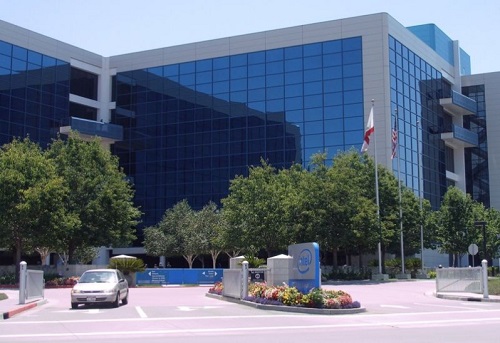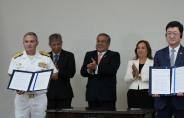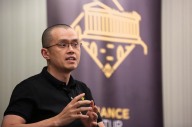
5년 전, 카산드라 필립스는 페일콘(FailCon)을 샌프란시스코에서 창립했다. 페일콘은 하루 동안 진행되는 스타트업 실패에 대해 자랑하는 회의이다.
회의는 매우 성공적이었다. 그리고 그 이후 4년 동안 매년 10월에 500개 이상의 IT 관련 스타트업 ‘뉴비’들은 산업의 베테랑들과 한데 모여서 그들이 자신의 가장 큰 실패에 이야기하는 것을 듣고, 함께 ‘모든 게 망했을 경우의 처세 방법’ 등과 같은 제목의 토론을 벌였다.
하지만 이번 년도 페일콘은 취소되었다. 필립스 씨는 그 이유 중 하나는 지금 실패에 대한 얘기는 실리콘 밸리에서 너무 만연해서 회의를 여는 것조차 불필요한 것처럼 보인다고 말했다. 그는 “스타트업이 실패하는 것은 이제 충분히 언급되고 있다"라고 말했다.
하버드 비즈니스스쿨의 시카르 고시 교수에 의하면 30-40%의 스타트업들은 투자자들의 돈을 거의 혹은 다 잃는다. 그리고 70-80%는 투자를 받은 것에 대한 결과물을 내놓지 못한다.
2012년 샌프란시스코 페일콘에서 그 당시 그루폰의 부대표였던 수닐 굽타는 회사의 초창기 시절 실수들을 공유했다.
이제는 실리콘 밸리 스타트업 사이에서 실패가 명예의 훈장이 되고 있다. 사업가들은 자신들이 어떤 역경을 겪었는지 공공연하게 광고한다.
‘오늘 내 스타트업이 실패했다’ (Today My Start-Up Failed)라는 포스트 제목으로 실리콘 밸리의 사업가 크리스 풀은 자신의 그림 그리는 앱 DrawQuest가 어떻게 실패했는지 블로그에 솔직히 털어놓았다. 풀 씨는 2월에 이렇게 적었다. “부드러운 착지도 없고 행복한 결말도 없다. 우린 그냥 실패했다.”
전문은 720자 정도로 마치 고백하듯 적었다. “많은 사업가들은 스타트업의 CEO로 실패하는 것이 얼마나 쓰린 것인지 알지 못한다.” 그는 실패가 Canvas라는 다른 스타트업의 실패 이후에 온 것이라고 말했다. (그 전에는 4chan이라는 미국의 유명한 익명 커뮤니티 사이트를 설립하고 성공을 거뒀다.)
풀 씨는 DrawQuest 앱이 140만 번 다운로드 되었지만 사업은 실패했다고 설명했다. “성공한 것처럼 보이는 사업이 실패한 다는 것이 놀라울 수도 있다. 하지만 항상 일어나는 일이다.” 풀씨는 적었다.
그는 처음으로 공개적으로 자신의 실패를 분석한 사람이 아니다. 이런 블로그 글은 실리콘 밸리의 스타트업 세계에서 너무 흔해져서 정보 사업 사이트인 CB 인사이트는 자신들의 블로그에 ‘51개의 스타트업 실패를 해부한다’ (51 Start-Up Failure Post Mortems)라는 제목으로 몇 십 개의 비슷한 글들을 모았다. 1월에 이 글이 올라왔고 6월에는 추가로 50개가 더해졌다.
초창기의 글들 중 하나는 조던 넴로우라는 사람의 것이다. 그는 '질리언이어스닷컴'이라는 앱으로 음악가들이 소비자들에게 짧은 기간 동안 직접 곡들을 팔 수 있도록 했다. 그는 질리언이어스닷컴이 붕괴한 이유는 “사람들이 그냥 우리의 앱의 어떤 부분도 좋아하지 않았다"라고 적었다.
그는 “우리의 서비스를 이용하는 사람들은 이 앱을 멋지다고 생각하지 않았다”라고 설명했다.
이 글이 유명해진 후에는 신기한 일이 벌어졌다. 넴로우는 “주말에는 십만 명 정도의 사람들이 우리의 글을 읽었다. 그리고 만 명은 우리의 앱을 구경하러 왔다. 그 전에는 총 100명의 방문자였다”라고 말했다.
불행히도 그가 질리언이어스닷컴을 엄청난 실패로 ‘아웃팅’ 시켜버렸을 때는 관심을 수익으로 전환시키기에는 너무 늦었을 때였다. 그 회사는 이미 도산해버렸다.
실리콘 밸리의 밖에서는 스타트업 세계가 아직 실패를 선전하는 분위기는 아니다. 그리고 그건 필립스 씨에게 새로운 사업 기회가 되었다. 4년 전에 페일컨을 1500달러에 브라질, 일본, 이란, 사우디아라비아, 이스라엘 등 다른 나라에 라이선스를 주기 시작했다. 토론토에서는 페일 포워드 (Fail Forward) 라는 회사가 다른 회사들의 실패에 대해 분석하고 배우는 상담을 제공하고 있다. 지난 7월에는 페일컨과 비슷한 회의도 열었다.
페일 포워드의 대표이자 창립자인 애슐리 굿은 “아무도 실패하고 싶어 하는 사람은 없다"라며 "아주 괴롭고 나는 절대 실패를 축하하라고 말할 수 없다. 하지만 똑똑하게 실패하는 것은 점점 더 중요해지는 기술이다”라고 덧붙였다.
그리고 그 방법은 실패에 대한 대화를 더 긍정적인 단어를 이용해서 하고, 자신의 활동과 자아를 구분하는 방법을 찾는 것이다.
굿 씨는 “'내가 실패했다고 해서 내가 실패작이라는 것은 아니다' 라고 자신에게 말할 수 있다” 라고 말했다.
실리콘 밸리에서 실패에 대한 이야기가 퍼지는 것에 대해 긍정적인 작용도 있지만 그 정보를 통해서 배우고 바뀌지 못하면 아무 의미가 없다고도 설명했다.
넴로우 씨는 다른 사람들이 본인의 글과 같은 실패담에 대한 글이 얼마나 인기가 많은 지를 보고 자신들 역시 어떻게 실패했는지 얘기 하면 좋겠다고 생각했다. 그리고 다들 그렇게 했다.
넴로우 씨는 다른 사람들의 글을 보면서, 독자들은 아이디어가 별로거나 노력이 대충인 것은 별로 신경 쓰지 않는다고 깨달았다. 이러한 실패는 그저 이력서에 한 줄을 더하거나 취직을 위해 쓰이는 것도 많았다.
필립스 씨 역시 그러한 추세를 놓치지 않고 있다. “너무 많은 사람들이 6개월 동안 스타트업을 하다가 ‘아 잘 안되네. 이제 다른 거 해봐야지’ 이러면서 손을 놓는다. 6개월 동안 내가 뭘 실패했는지에 대해서 10 페이지에나 걸쳐서 쓸 필요가 있었을까?” 그녀는 이렇게 말했다.
5년 동안 다른 직장을 가지면서도 부업으로 페일컨을 운영한 필립스 씨는 사업가로서의 노하우도 많이 배웠다. 포켓 젬스 라는 모바일 게임 회사에서 게임 디자이너로 일하고 있는 그는 항상 새로운 상품은 여러 방법으로 위기를 맞을 것이라고 미리 짐작한다. 예를 들자면 문제를 일으키는 직원이 있다든지 부정적인 리뷰를 많이 받는다든지 등의 문제들이다.
그녀는 “문제점이 없었던 상품은 하나도 없었다"라고 말한다.
필립스 씨의 팀은 문제가 일어나기 전에 문제를 여러 개 상정하고 해결안을 만들어 놓는다. 구체적인 대응 방법을 제시해 두고 문제가 일어났을 때 문제를 알아챌 방법들도 설치해 둔다.
어떤 방면에서는 페일컨의 성공이 필립스 씨를 곤경에 빠뜨렸다.
지난 세 번의 페일컨은 매진되었고 각자 100-350 달러를 낸 400-500명의 사람들을 끌어 모았다. 그리고 페일컨은 아마존 웹서비스나 콤캐스트, 마이크로소프트와 같은 스폰서들도 얻었다. 그에 의하면 페일컨은 재정적으로 성공적이었다.
하지만 현재는 실리콘 밸리가 실패를 당연하게 받아들이게 되면서 페일컨의 구성 방식은 맞지 않게 되었다.
그는 이제 페일컨을 재구성하려고 한다. 더 작고, 상호작용이 많고, 초대에 의해서만 들어올 수 있는 워크숍을 형태로 갈 수도 있다. 페일컨 2.0은 2015년 10월에 선보일 예정이다.
사업가들은 아직 실패에 대해 더 배울 필요가 있다. 실리콘 밸리의 비즈니스 인큐베이터는 스타트업 기업들에게 어떻게 대비해야 하는지 충분히 조언해주지 못하기 때문이라고 캘리포니아 대학의 정신의학 교수 마이클 프리먼이 말했다. 비즈니스 센터와 연계해서 그는 ‘실패의 응급처치’라는 워크숍을 실리콘 밸리에서 작년에 열었다.
그는 실리콘 밸리 안에서 문화적 차원에서는 실패는 개인이 견디기 힘들 수는 있지만 더 이상 낙인은 아니라고 말했다.
버클리의 캘리포니아 대학의 연구자들과 함께 그는 이제 기업의 성공과 실패에 대해 연구하고 있다. 비영리 단체와 스타트업의 공동 창립자인 프리먼 교수는 이렇게 말했다. “실리콘 밸리에 매달 10억 정도의 새로운 투자금이 들어오고 있다. 이제 투자자들은 실패하더라도 앞에 나가서 얘기할 용기가 있다고 믿는다. 역경에 져서 비즈니스를 추구하는 것을 그만둘 것이라고 생각하지 않는다”
트레이 그리프트는 망해가는 스타트업을 경영하는 것은 “머리를 벽에다가 박아대며 여러 가지를 시도하지만 아무것도 성공하지 못하는 기분이다"라고 말했다.
그리프트 씨는 엔도스미라는 스타트업을 경영했다. 이것은 회사들이 교수 추천을 통해 지원자를 찾는 사업이었다. 사업을 유지하기 위해서 블로그에 자신의 고난을 알리고 조언을 구하면서 SOS 신호를 보냈다.
그는 현재 자신의 실패를 알린 것을 매우 기쁘게 생각한다. 그 덕분에 현재의 상사를 만날 수 있었다.
그리프 씨는 현재 텔레보더 라는 회사에서 기술 부문의 부대표이다. 이 회사는 샌프란시스코에 위치해 있고, 인사부에서 외국인 직원들의 비자를 관리할 수 있게 하는 프로그램을 제공한다. 그는 텔레보더에서 직원을 뽑기 위해 면접을 할 때는 이력서에 실패가 있더라도 부정적으로 보지 않는다고 말했다.
그 이유 중 하나는 실용성 때문이다. 그리프트 씨는 스타트업의 곤란을 경험해 본 사람이나 성공적인 회사들을 경영하고 있어서 일자리를 알아볼 필요가 없는 사람들에게 매우 흥미가 있다고 한다.
그는 넴로우씨가 질리언이어스닷컴의 실패에 대해 쓸 때쯤에 자신의 실패에 대해 글을 올렸다. 넴로우 씨는 도움을 주겠다고 했다. 둘은 베이에리어의 술집에서 함께 술을 마셨고 넴로우씨가 쇼핑 사이트에 취직하고 그리프트 씨가 텔레보더에 취직한 이후에도 계속 연락했다.
그리고 그 둘은 곧 성공을 공유하게 되었다.
넴로우 씨는 쇼핑 웹사이트 숍 잇 투미 에서 일하기로 결정한 것에 대해 이렇게 말했다. “나는 성공하는 스타트업들을 보는 것도 중요하다고 생각했다. 그 안이 어떻게 생겼는지 보고 싶었다”
그리프트 씨는 더 이상 머리를 다친 것 같은 기분이 들지 않는다.
그리프트는 “자기 회사가 성공적이고 사업을 확장하고 있으면 정말 기분이 다르다. 우리 회사는 이제 일이 돌아가는 단계에 있다. 아직 완벽하지는 않고 고칠 것도 많지만 좋은 방향으로 움직이고 있다. 굉장히 흥분되는 경험이다"라고 말했다.
몇 달 전에는 그리프트씨가 넴로우 씨를 텔레보더에 소프트웨어 엔지니어로 영입했다.
넴로우 씨는 자신의 회사에 대해 이렇게 말했다. "전혀 ‘섹시’한 사업이 아니다. ‘아, 네 저희 비자 쪽 일 해요’ 이런 느낌이다. 하지만 지금은 괜찮은 사업도 많이 실패하고 있다. 이건 전혀 다른 경험이 될 것이다.
/뉴욕타임즈 원문
Wearing Your Failure on Your Sleeve (NY Times)
Five years ago, Cassandra Phillipps founded FailCon, a one-day conference in San Francisco celebrating failure. Discouraged by a growing chorus of start-up founders promoting their triumphs throughout Silicon Valley, and nervous about her own prospects as an entrepreneur, she craved the stories of people who had flopped.
The conference was a success. And every October for the next four years, up to 500 tech start-up newbies have gathered with industry veterans who dish on their “biggest fail” and lead round-table discussions with titles like “How to Conduct Yourself When It All Goes Off the Rails.”
But this year, the FailCon event in San Francisco was canceled, and Ms. Phillipps says part of the reason is that failure chatter is now so pervasive in Silicon Valley that a conference almost seems superfluous. “It’s in the lexicon that you’re going to fail,” she says.
According to research by Shikhar Ghosh, a senior lecturer in the entrepreneurial management unit at Harvard Business School, 30 to 40 percent of venture-backed start-ups blow through most or all of their investors’ money, and 70 to 80 percent do not deliver their projected return on investment.
Suneel Gupta, then a vice president at Groupon, discussed some of the company’s early missteps at FailCon 2012 in San Francisco. Credit J.T. Trollman
Now failure is emerging as a badge of honor among some Silicon Valley start-ups, as entrepreneurs publicly trumpet how they have faced adversity head-on.
In a blog post titled “Today My Start-Up Failed,” the Silicon Valley entrepreneur Chris Poole did not mince words in describing the demise of his company DrawQuest, a drawing-game app. “No soft landing, no happy ending — we simply failed,” Mr. Poole wrote in February.
In the 720 words that followed, his tone was confessional. “Few in business will know the pain of what it means to fail as a venture-backed C.E.O.,” he wrote. This, he added, came on the heels of the failure of his earlier tech start-up Canvas. (It also followed his founding of the hugely successful 4chan, an anonymous online messaging forum.)
Mr. Poole explained to his readers that even though the DrawQuest app had been downloaded 1.4 million times, the business could not survive. “It may seem surprising that a seemingly successful product could fail,” he wrote. “But it happens all the time.”
He is not the first to publicly dissect his own entrepreneurial failure. Blog posts like his have become so common in the Silicon Valley start-up world that the blog for the information services firm website CB Insights anthologized several dozen similar posts in a January article titled “51 Start-Up Failure Post Mortems.” Since June, the site has updated the article with an additional 50.
One post in the early wave of entries was by Jordan Nemrow, whose app Zillionears.com allowed musicians to sell their music directly to consumers through short-term sales known as flash sales. Mr. Nemrow wrote that Zillionears.com imploded because “people really didn’t LIKE anything about our product.” He added, “No one that used the service thought it was that cool.”
After the post went viral, something odd happened. “We got like 100,000 hits in a weekend on that blog, which actually resulted in like 10,000 views of our app,” Mr. Nemrow says. “Before that we had 100 views total.”
But unfortunately for him, by the time he outed Zillionears.com for its ghastly performance, it was too late to translate the resulting frenzy of interest into sales. The company had already gone belly up.
Mr. Nemrow went on to describe the company’s missteps in an interview on a website, the Startup Sessions. And along with his co-founder, Dan Polaske, he continued discussing his flaws in a YouTube video.
Beyond Silicon Valley, start-up circles are lagging in their gusto for failure — and that has presented Ms. Phillipps with another business opportunity. Four years ago, she began licensing the FailCon event for a $1,500 fee to producers in other countries, including Brazil, Japan, Iran, Saudi Arabia and Israel. And in Toronto, a company called Fail Forward consults with companies looking to examine and learn from their failures. Last July, it led a conference similar to FailCon.
“Nobody wants to fail,” says Ashley Good, chief executive and founder of Fail Forward. “It’s awful. You will never hear me say to celebrate failure.” But, she added, “failing intelligently is an increasingly important skill.”
By that, Ms. Good means looking for ways to change the conversation about failure by using different, more positive language and by being able to separate ego from activities.
“You can actually say to yourself, ‘Just because I failed doesn’t mean I am a failure,’ ” Ms. Good says.
She sees a benefit to post-mortems like those rippling through Silicon Valley, but she says mea culpas are meaningless if company founders do not use the information to learn and change.
Mr. Nemrow of Zillionears.com says that when people saw the popularity of posts like his, they started thinking they could describe how their own businesses faltered, “and then everyone went to it.”
Looking at the other posts, he realized that it did not seem to matter whether the idea was half-baked, or the effort expended halfhearted. The failure could be a résumé booster, and the online post-mortem a calling card.
Ms. Phillipps says she has noticed the trend, too. “There are so many people who worked on a start-up for six months and were just like: ‘Well, that didn’t work out. I’m moving on to my next thing,’ ” she says. “Did you really need to write a 10-page post about all the things you learned from your six-month-long failure?”
In her five years running FailCon as a side project while holding down other full-time jobs, Ms. Phillipps gathered a fair amount of entrepreneurial wisdom. In her current job as a game designer for the mobile gaming company Pocket Gems, she says she always assumes that new products her group creates will hit the skids in several ways. They will discover a problematic employee in the mix, for example, or the products will garner some negative user reviews.
Trey Griffith, left, and Jordan Nemrow met by sharing their experiences in running failed start-ups. Today, both are working at Teleborder. Credit Jim Wilson/The New York Times
“There has never been a product launched that didn’t have those failures,” she says.
Ms. Phillipps and her team pre-emptively draft plans for how to handle these and other problems. They brainstorm specific solutions and set up warning systems to clue them in to the fact that a fiasco has occurred in the first place.
In some ways, FailCon’s success created a quandary for Ms. Phillipps. The last three conferences sold out, each drawing 400 to 500 people who paid $100 to $350 each. And FailCon attracted big-name sponsors, including Amazon Web Services, Comcast and Microsoft. She says the conference was financially profitable.
Now, she says that Silicon Valley’s embrace of failure has outgrown the FailCon format — and that a one-day conference no longer seems to be the best fit.
So she is aiming to reboot FailCon. She may turn to smaller, more interactive workshops and an invitation-only application process. FailCon 2.0 is to make its debut in October 2015.
Entrepreneurs still need to learn about failure because Silicon Valley tech incubators typically don’t advise start-ups about how to prepare for it, says Dr. Michael A. Freeman, a clinical professor of psychiatry at the University of California, San Francisco, who works with entrepreneurs in tech start-ups. Affiliated with the Entrepreneurship Center at the university, he ran a workshop called “First Aid for Failure” at FailCon in San Francisco last year.
He says failure has been “significantly destigmatized” on a cultural level in Silicon Valley and the Bay Area, even though on an individual level it can still be painful to endure.
With researchers at the University of California, Berkeley, he is now conducting a study on failure and success among entrepreneurs. “We are getting a billion dollars a month of new investor money coming into the region,” says Dr. Freeman, a co-founder of a nonprofit and a start-up. “If you fail, some investors believe that you’ve got the guts to take it to the mat. That you’re not personally going to be so damaged by adversity as to lose your persistence in business. That you’ll fight.”
For Trey Griffith, running a failing tech start-up felt like “pounding your head against the wall and trying a bunch of things, but nothing’s working,” he says.
Mr. Griffith presided over a start-up called Endorse.me, which set out to help companies recruit college students by using teacher recommendations. He sent out what he calls an S.O.S. when he was in the throes of trying to keep his business going. It was a blog post detailing his plight and pleading for advice from readers.
He is glad he voiced his woes so publicly — he met his current boss as a result.
Mr. Griffith is now vice president for technology at Teleborder, a company based in San Francisco that makes software for human resources departments to use in organizing visas for overseas employees. He says that when interviewing job candidates for positions at Teleborder, he doesn’t shy away from candidates with failures on their résumés.
Part of that is a matter of practicality. Mr. Griffith is interested in candidates who have experienced the hardships of a start-up, and in entrepreneurs whose companies are succeeding and therefore aren’t looking for jobs.
He wrote about his failings about the same time Mr. Nemrow of Zillionears.com wrote about his. Mr. Nemrow offered support. The two commiserated over drinks at a Bay Area bar, and they stayed in touch after Mr. Nemrow took a job at the shopping website Shop It to Me and Mr. Griffith began working at Teleborder.
Soon they had something new in common: success.
“I thought it would be really important to see start-ups that succeed,” says Mr. Nemrow of his decision to work at Shop It to Me. “I wanted to see the inside workings of them.”
And Mr. Griffith no longer feels as if he is risking a head injury.
“It’s really different when your company is doing well and growing,” he says. “Our company now is at a stage where things are working. Like, it’s not perfect, and we definitely have to fix some stuff, but we’re moving in the right direction. It’s a really exciting feeling.”
A couple of months ago, Mr. Griffith recruited Mr. Nemrow to work with him at Teleborder as a software engineer.
“It’s, like, the least sexy business,” Mr. Nemrow says of his new company. “It’s like, ‘Oh, yeah, we do visas.’ But right now, there are so many sexy businesses that are failing. It’s going to be much different. It’ll be an interesting change.”

















![[초점] 美달러 '초강세'·中위안 '초약세' 심화...양국 통상 분쟁 격화 예고](https://nimage.g-enews.com/phpwas/restmb_setimgmake.php?w=184&h=118&m=1&simg=20240424081210010656b49b9d1da17379164136.jpg)






































